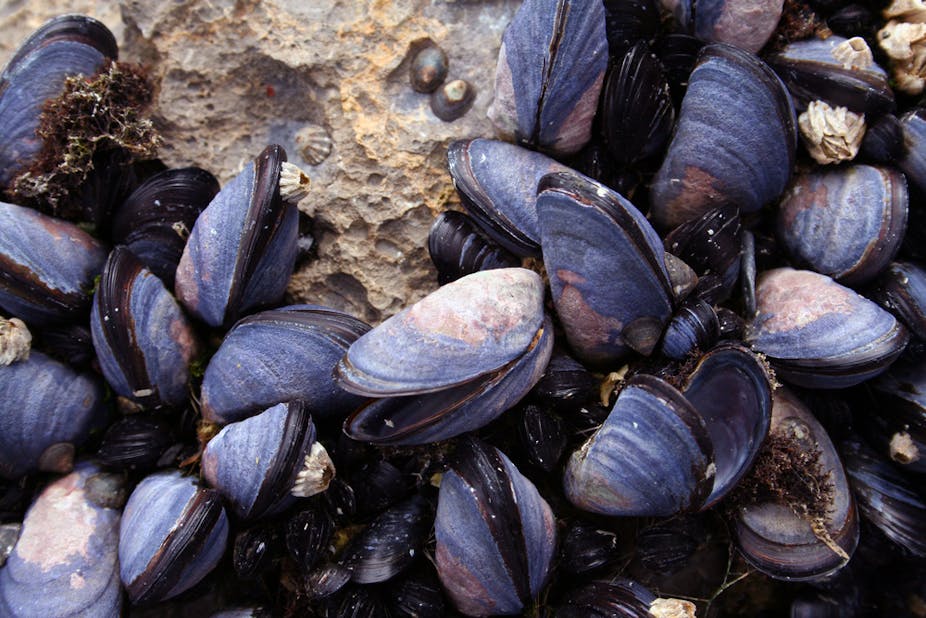One of the big problems with the world’s heavy carbon emissions is that they are driving up the levels of carbon dioxide in our oceans, which is making them more acidic. The surface pH of the oceans has already dropped from 8.1 to 8.0 over the past couple of decades, and is projected to reach 7.7 by 2100 – a huge change in biological terms.
This is reducing the carbonate in the water that marine organisms including shellfish, corals and sea urchins depend on to make their shells and exoskeletons. I co-published a study two years ago into how this would affect mussels. By simulating the ocean conditions of 2100, we found that their shells did not grow as large and were harder and more brittle. Now, in a new study, we have seen fascinating signs of them adapting to these changes.
When we looked at the mussel shells of the future in our first study, we found they fractured considerably more easily. This made them more vulnerable to predators such as birds and crabs – and also to stormy conditions, since the stronger waves can bang them against rocks and other mussels. As an economically important food source across the world, it has worrying implications for those who depend on them to make their living – indeed, mussel farmers tell me they are noticing these changes even now. It also raises the prospect of similar problems for other shellfish such as oysters and cockles, not to mention sea urchins and corals.

Adaptation
Our new study took the work further by using a combination of X-ray techniques to understand how ocean acidification causes these changes and how the organisms continue to make their shells in spite of it.
Marine organisms such as mussels create shells in several stages. They take up the carbonates and calcium in sea water through their tissue and convert them into a substance known as amorphous calcium carbonate (ACC). They essentially move this substance to the correct location in their body and convert it into a harder substance called crystalline calcium carbonate (CCC), which comprises the bulk of the shell. But they also keep some carbonate in ACC form, which they use for repair purposes – not unlike the way humans grow bones.
Our “future mussels” had to cope with the uptake of fewer carbonates overall, but what they did was to convert a lower proportion into CCC than usual – hence they grew less shell. Instead they kept more as ACC, which seemed to be a repair mechanism to combat the increased risk of shell damage from having more brittle shells.
So is this a sign that nature will find a way to cope as the oceans get more acidic? Not necessarily. The mussels might have been retaining more of the repairing ACC, but they are vulnerable while the shell is fractured, and might not live long enough to fix it.
We also don’t yet know whether they would have enough ACC to keep their more brittle shells in a good enough state of repair. To find out, you would have to look at what happens to them over a number of generations. This is what we intend to look into next. This research will have huge implications for other marine organisms producing calcium carbonate shells and exoskeletons including shellfish, corals and sea urchins. In the meantime, ocean acidification undoubtedly means huge changes for the creatures that live there, with consequences that are extremely difficult to predict.

